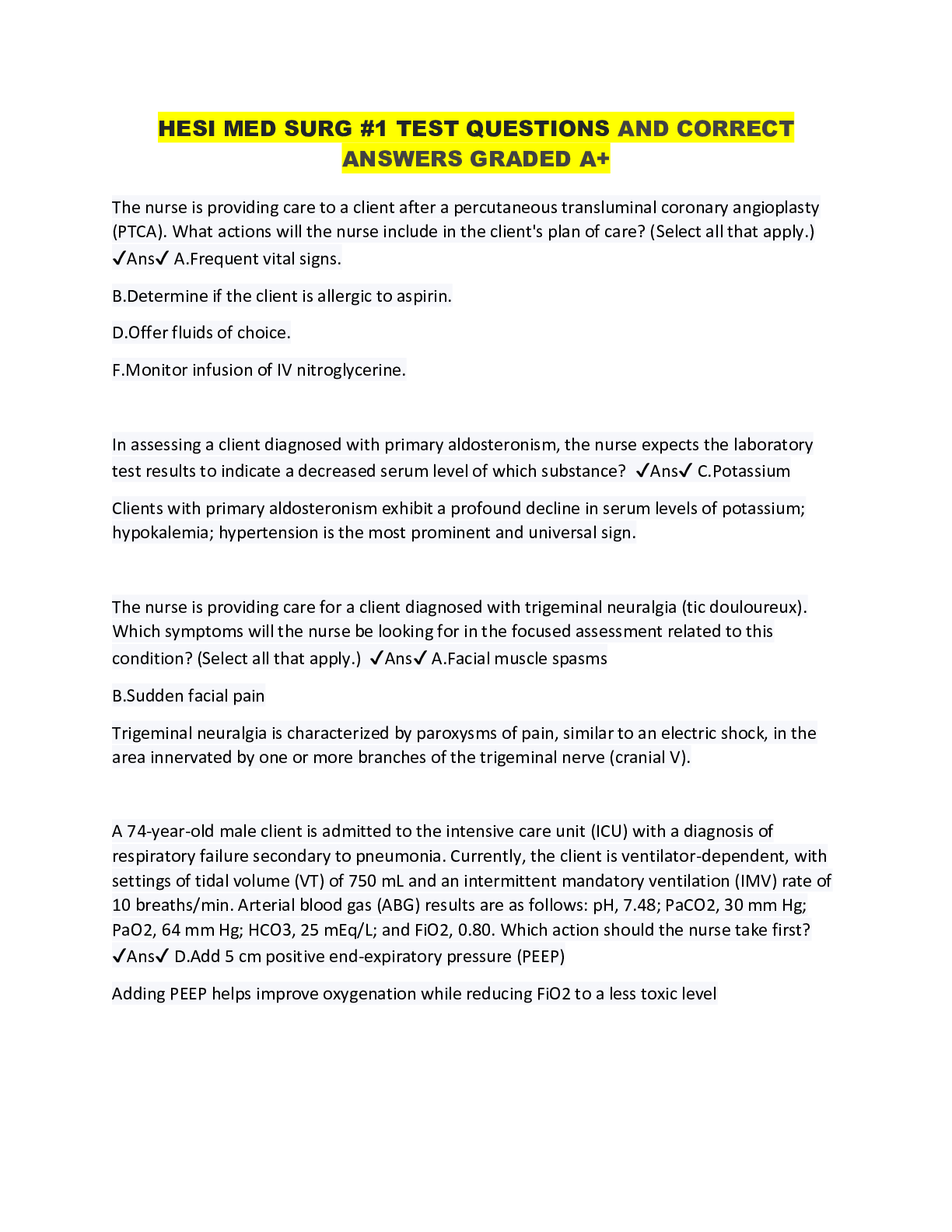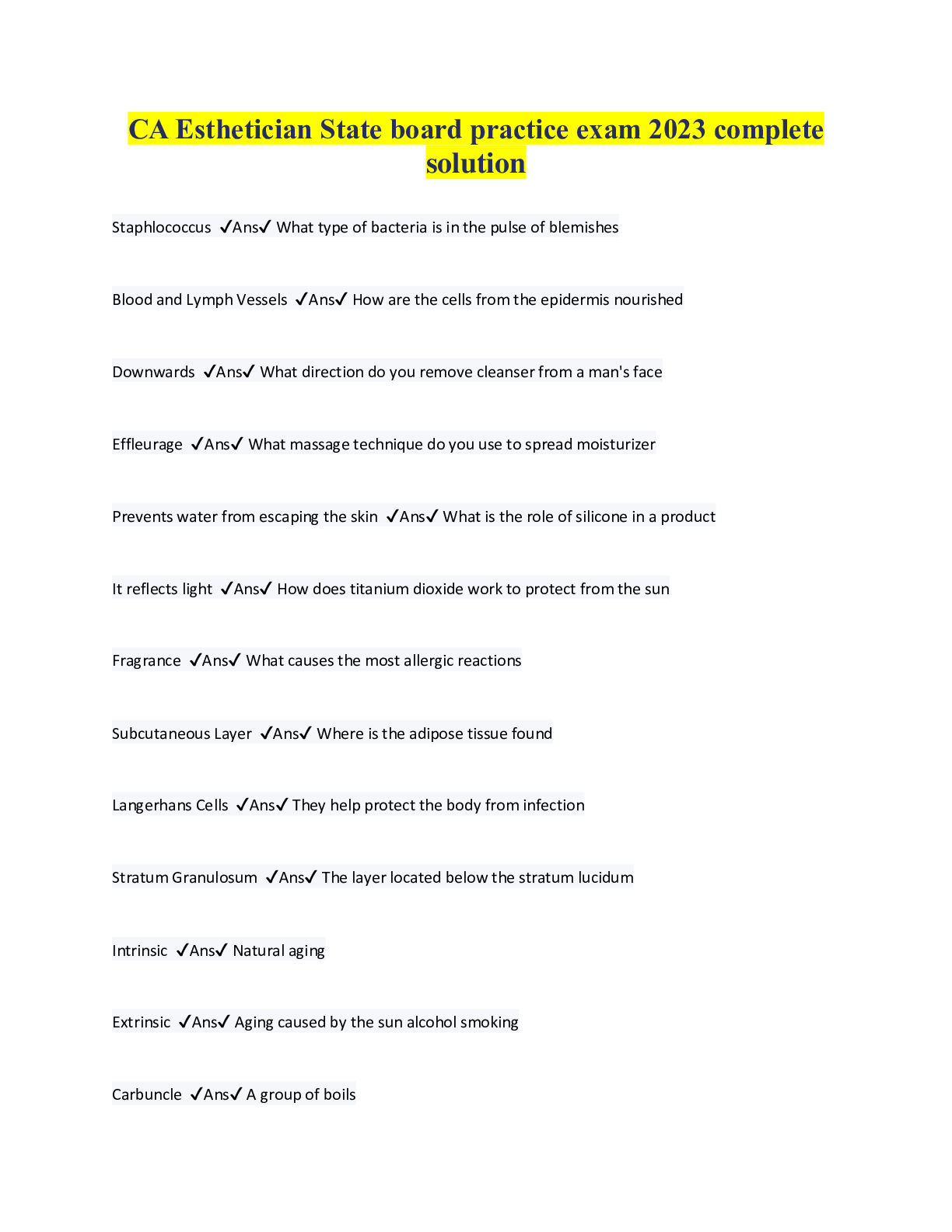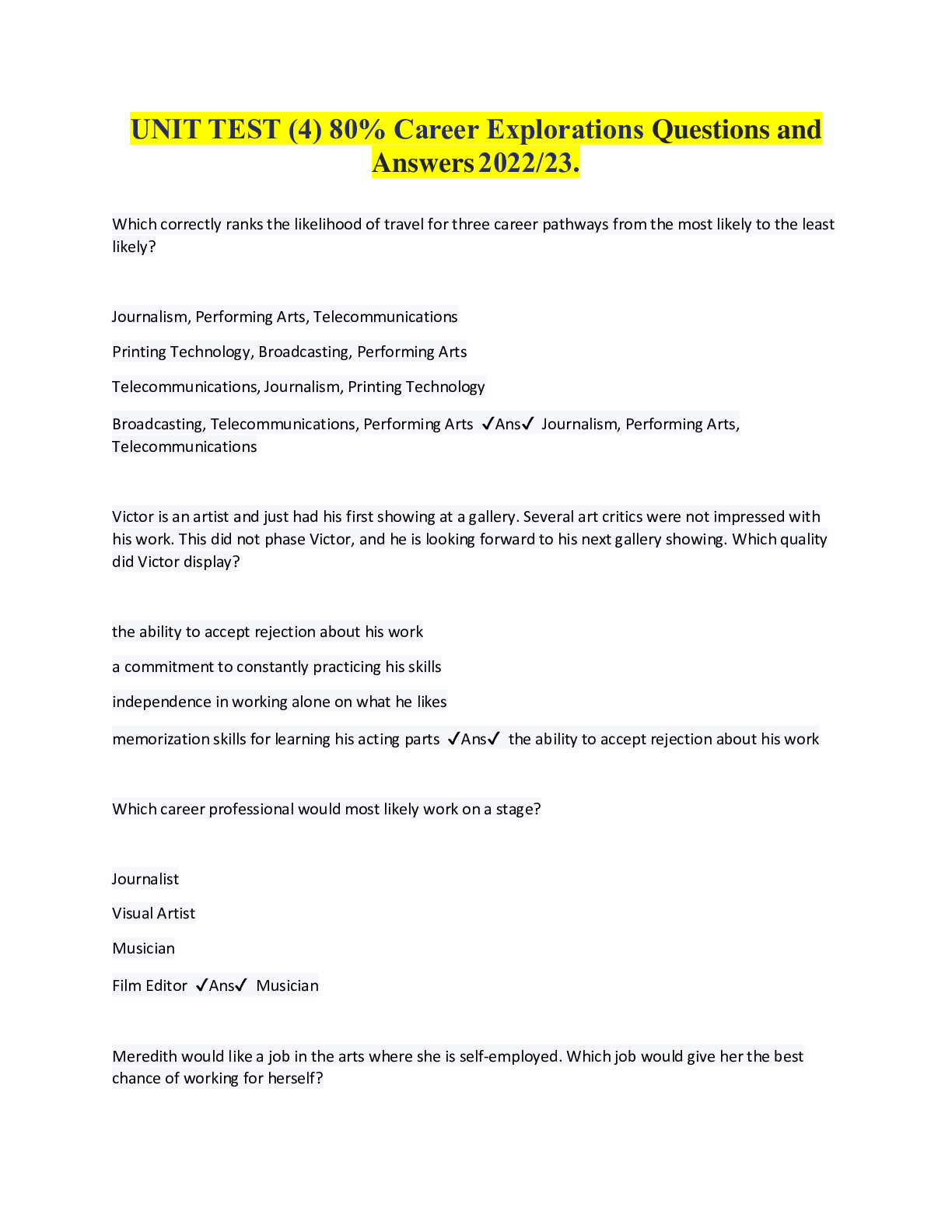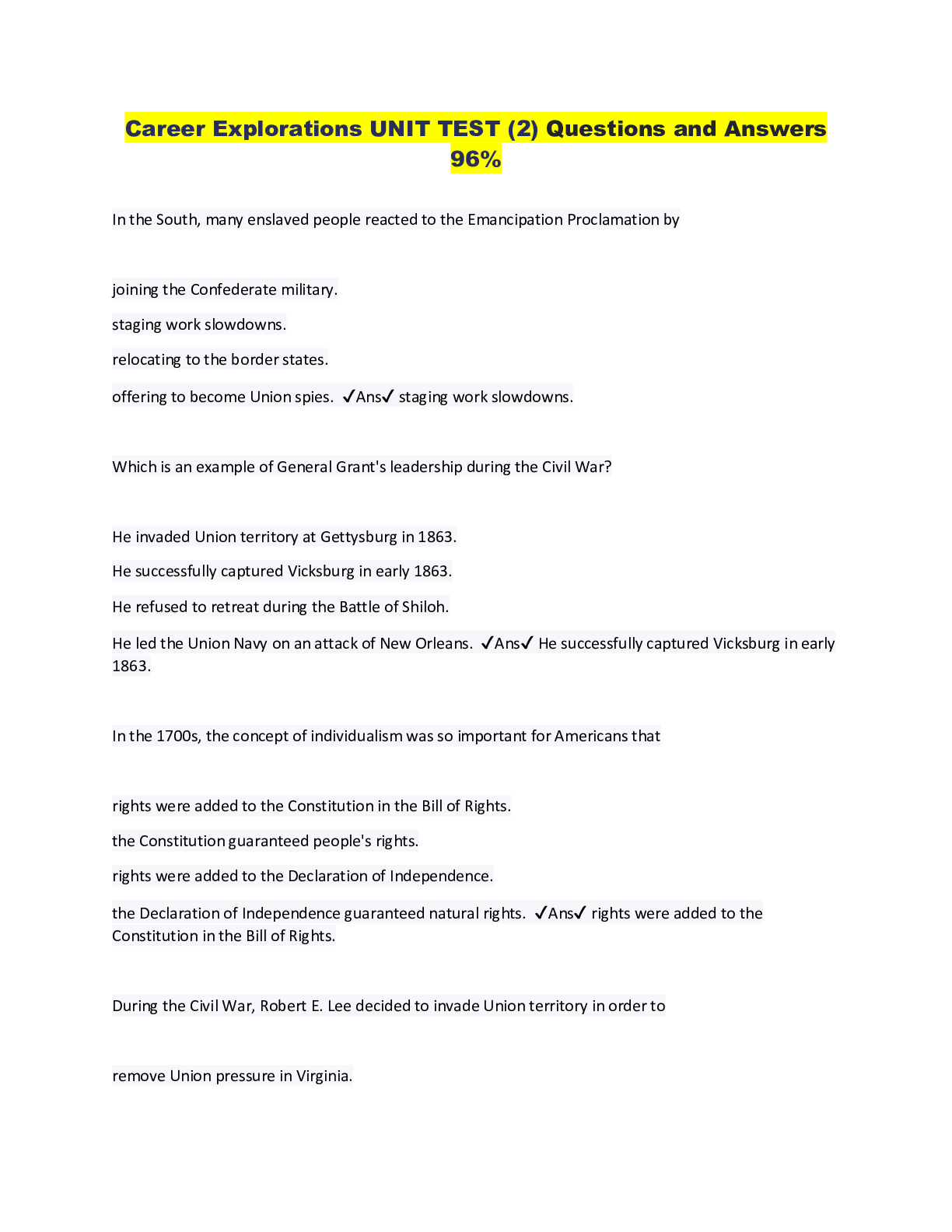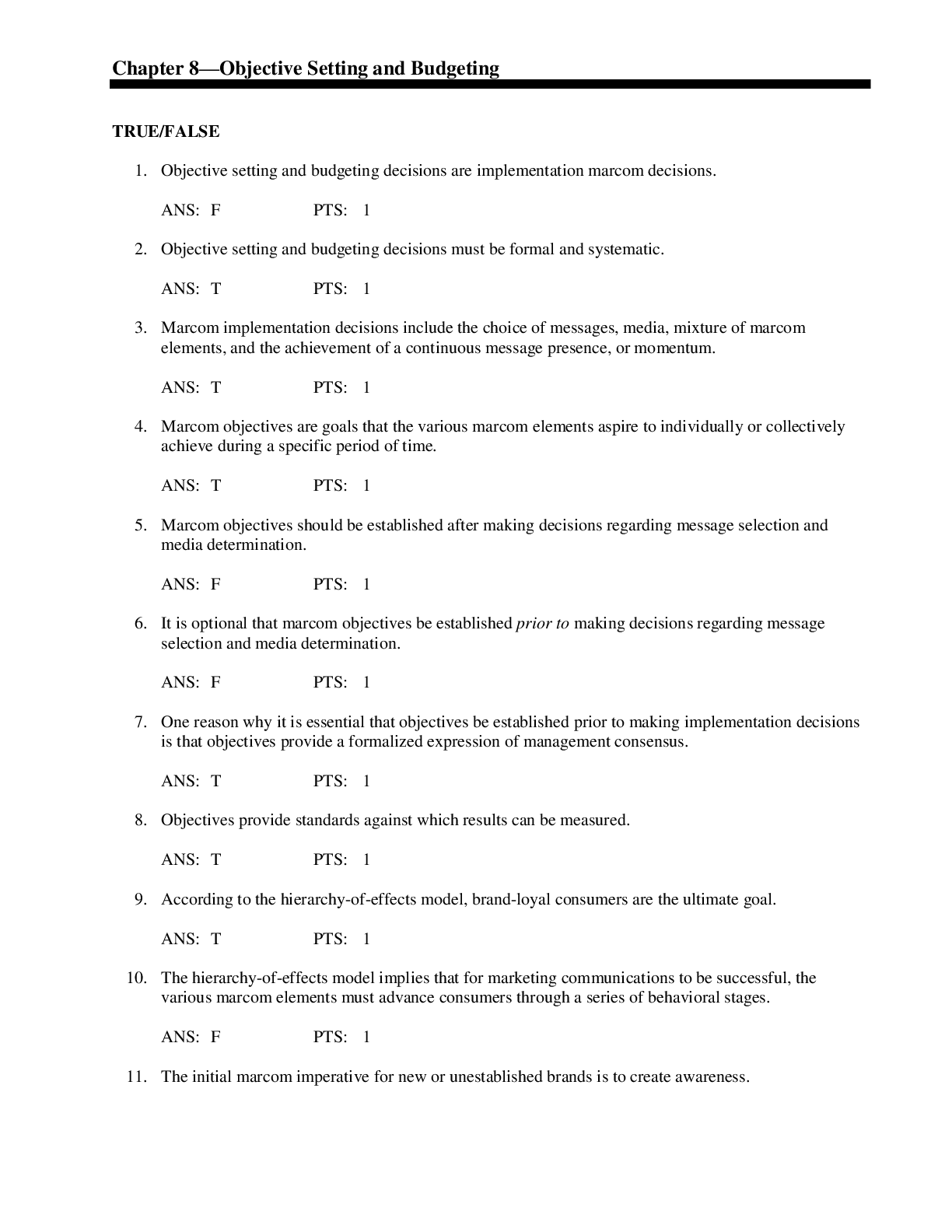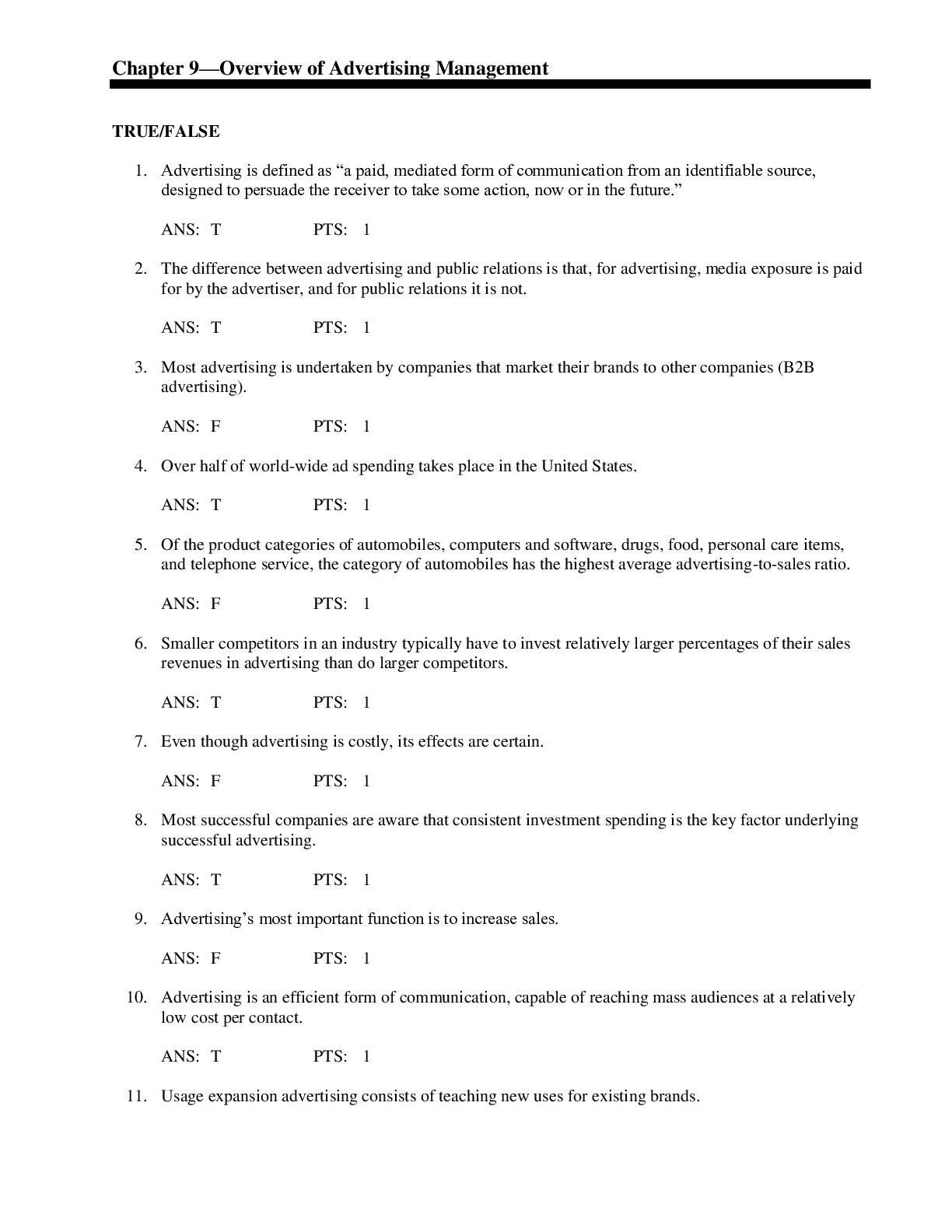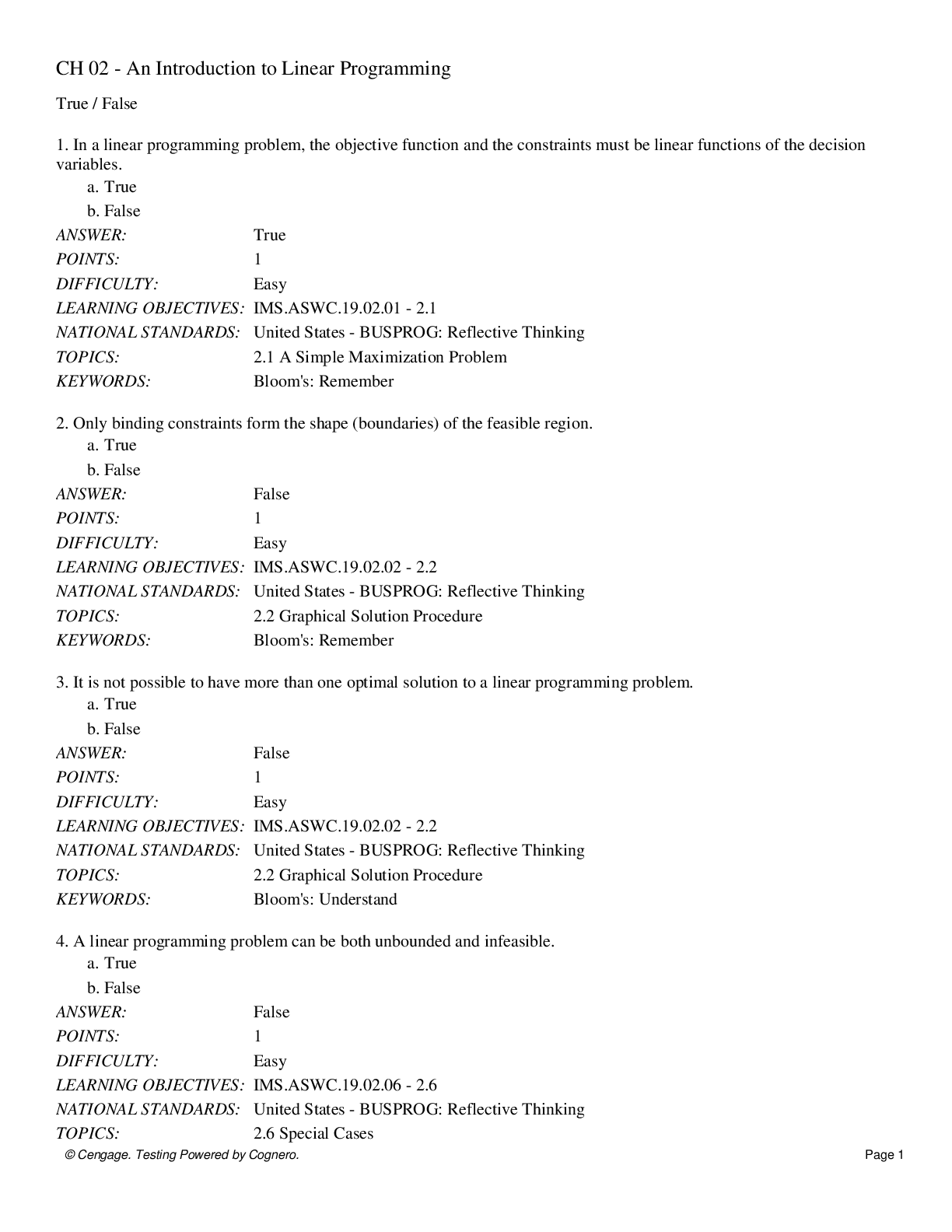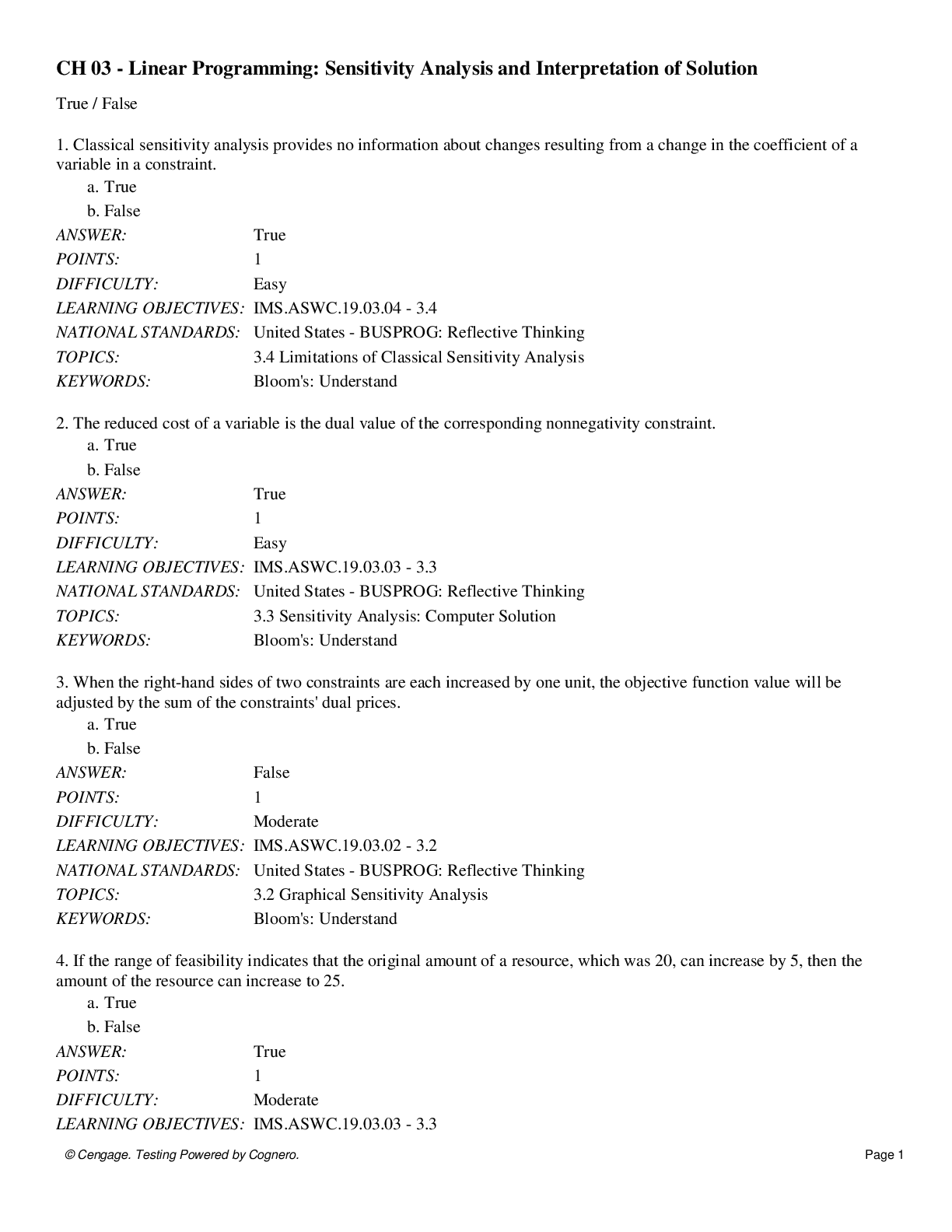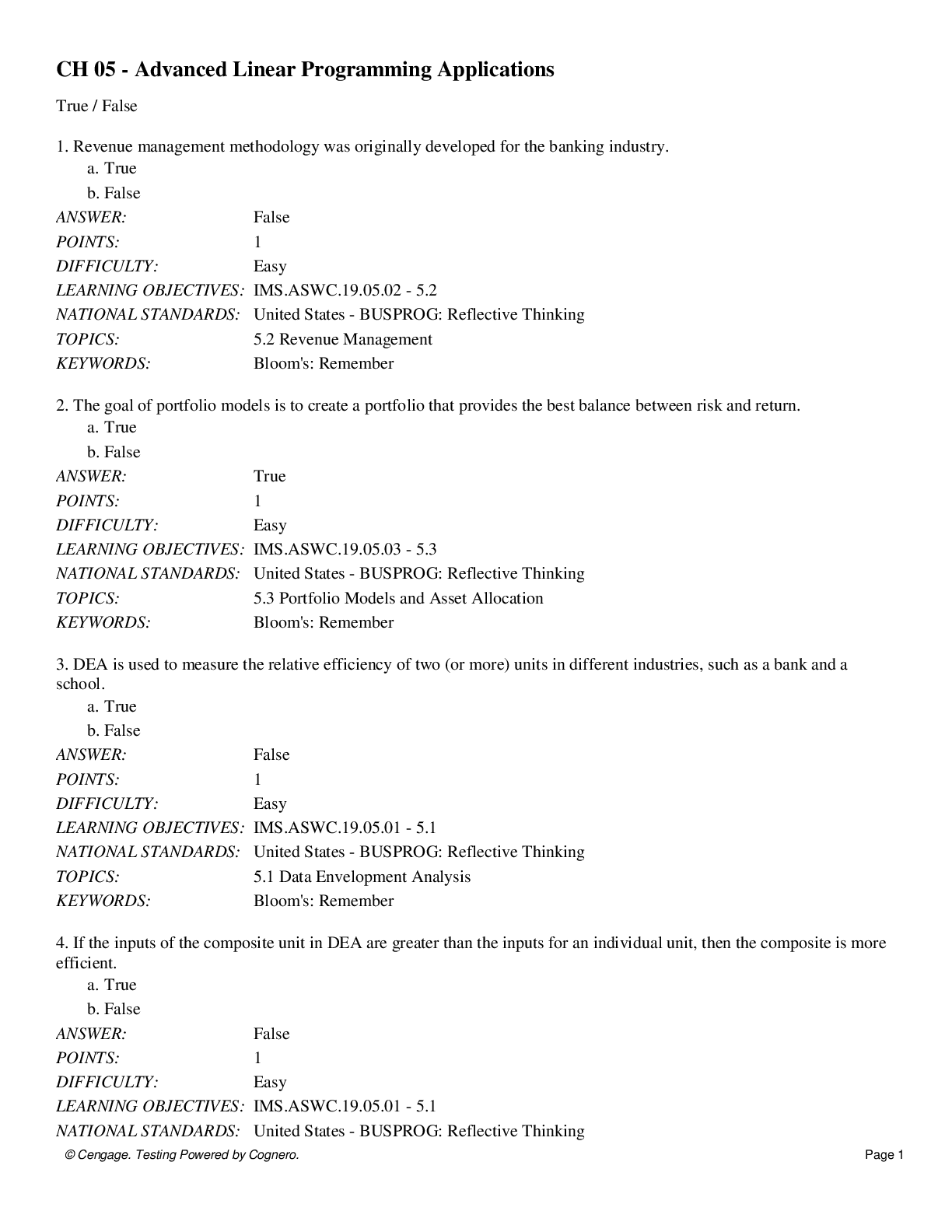Music > QUESTIONS & ANSWERS > Music Therapy Board Certification Exam Questions and Answers Rated A+ (All)
Music Therapy Board Certification Exam Questions and Answers Rated A+
Document Content and Description Below
Music Therapy Board Certification Exam Questions and Answers Rated A+ Music therapy ✔Ans✔ "The clinical and evidence-based use of music interventions to accomplish individual goals within a ther... apeutic relationship by a credentialed professional who has completed an approved music therapy program" (AMTA, 2015). Education for All Handicapped Children Act ✔Ans✔ Public Law 94-142; passed in 1975 to call for mainstreaming of students with disabilities into public schools in the United States ("free and appropriate" education) Individualized Education Program (IEP) ✔Ans✔ Developed in 1978 through IDEA to improve the education of students with disabilities who are qualified for special education in the United States; written plan that includes an assessment of the student's strengths and limitations, concrete goals and objectives for education, a list of the people administering the program, related services, and methods for evaluation American Music Therapy Association (AMTA) ✔Ans✔ The national organization that represents the field of music therapy in the United States today; promotes awareness of the profession, advances clinical and scientific knowledge in the field, and sets and maintains the standards of music therapy practice Iso principle ✔Ans✔ The concept that music should be chosen to initially match the mood state of a client and adjusted gradually to the desired mood state; described in Kircher's (1602-1680) theory of temperaments and affections, in the dissertation of Samuel Mathews in 1806, and by Esther Gatewood in 1920; termed in the 1940s by Ira Altshuler National Association for Music Therapy ✔Ans✔ Established in 1950; first national organization to represent the field of music therapy; signaled the birth of the music therapy profession American Association for Music Therapy ✔Ans✔ Established in 1971; originally called the Urban Federation for Music Therapists (UFMT); the second national organization that represented the field of music therapy; merged with the NAMT in 1998 to form the AMTA Board Certification exam ✔Ans✔ Established in 1985 by the NAMT and the AAMT to increase the credibility of the field of music therapy; an exam taken by a music therapy student to measure his or her knowledge of music therapy principles and foundations, clinical theories and techniques, general knowledge about music, and professional roles and responsibilities Sensorimotor ✔Ans✔ The first stage of Piaget's theory of development that takes place between the ages of zero and two; the child learns through his or her senses and motor movements New musical activities: listening to lullabies, listening to speech and environmental sounds, being rocked, vocal play, babbling, and moving rhythmically to music Infant-directed speech ✔Ans✔ An innate speech tendency used with infants that is characterized as high in pitch, exaggerated in affect and speech contour, and drawn out Preoperational ✔Ans✔ The second stage in Piaget's theory of development that takes place between the ages of two and seven; the child's language and conceptual skills and interpersonal awareness increase New musical activities: playing musical instruments, coordinating gross and fine motor movements to music, singing songs, improvising melodies, and participating in musical games Parallel play ✔Ans✔ The mode of playing during which two or more children engage in the same activity without interacting with each other Beat competency ✔Ans✔ The ability to follow and maintain a simple, steady beat Concrete operations ✔Ans✔ The third stage of Piaget's theory of development that takes place between the ages of 7 and 11; the child can think systematically and solve problems within his or her reality New musical activities: learning and playing an instrument, reading musical notation, performing in an ensemble Formal operations ✔Ans✔ The fourth stage of Piaget's theory of development that takes place between the ages of 11 and adulthood; the child can think abstractly; new musical activities: composition Elements of music ✔Ans✔ Pitch, intensity, duration, and timbre Functions of music ✔Ans✔ Proposed by Alan Merriam in 1964; physical engagement, communication, emotional expression, aesthetic enjoyment, entertainment, integration of society, conformity to social norms, validation of social institutions and religious rituals, symbolic representation, and continuity and stability of culture Tactile ✔Ans✔ Referring to the sense of touch The Bonny Method of Guided Imagery and Music (GIM) ✔Ans✔ A music therapy approach created by Hellen Bonny that involves listening to classical music from a relaxed state and experiencing internal imagery while a music therapist provides verbal guiding interventions in order to expand self-awareness, enhance creativity, develop spirituality, and achieve a healthier state of being Attention ✔Ans✔ The act of attending to a stimulus of interest; this can be shifted, divided, or sustained Perception ✔Ans✔ The brain's way of processing information received through the senses; involves recognition, organization, synthesis, filtering, and meaning Good Gestalts ✔Ans✔ According to Gestalt psychology, the principle that figures and patterns tend to be perceived in the most stable form as sensory input will allow; a whole Memory ✔Ans✔ The storage and retrieval of information in the brain Retrieval ✔Ans✔ The re-accessing of long-term memories stored in the brain Encoding ✔Ans✔ The storage of memories Mnemonic device ✔Ans✔ A memory tool Long-term memory ✔Ans✔ Information that is rehearsed and stored in the brain and is accessible for a long period of time, sometimes throughout life Safety valve function ✔Ans✔ The use of music to express disapproval of a social reality or deep-felt emotions Extramusical associations ✔Ans✔ A thought, emotion, or sensation experienced in response to a sound that represents something nonmusical; e.g. linking a bell tone to the end of class Cultural convention ✔Ans✔ A set of common standards or social norms in a group of people; e.g. in Western music, the dominant triad leads to the tonic triad Referentialist philosophy ✔Ans✔ The principle that music finds its meaning in the symbolic representation of nonmusical ideas or events Iconicity ✔Ans✔ The use of musical structures to represent a feeling, object, or event; i.e. word painting, tone painting, text depiction [Show More]
Last updated: 1 year ago
Preview 1 out of 60 pages

Buy this document to get the full access instantly
Instant Download Access after purchase
Add to cartInstant download
We Accept:

Reviews( 0 )
$11.00
Document information
Connected school, study & course
About the document
Uploaded On
Feb 28, 2023
Number of pages
60
Written in
Additional information
This document has been written for:
Uploaded
Feb 28, 2023
Downloads
0
Views
85
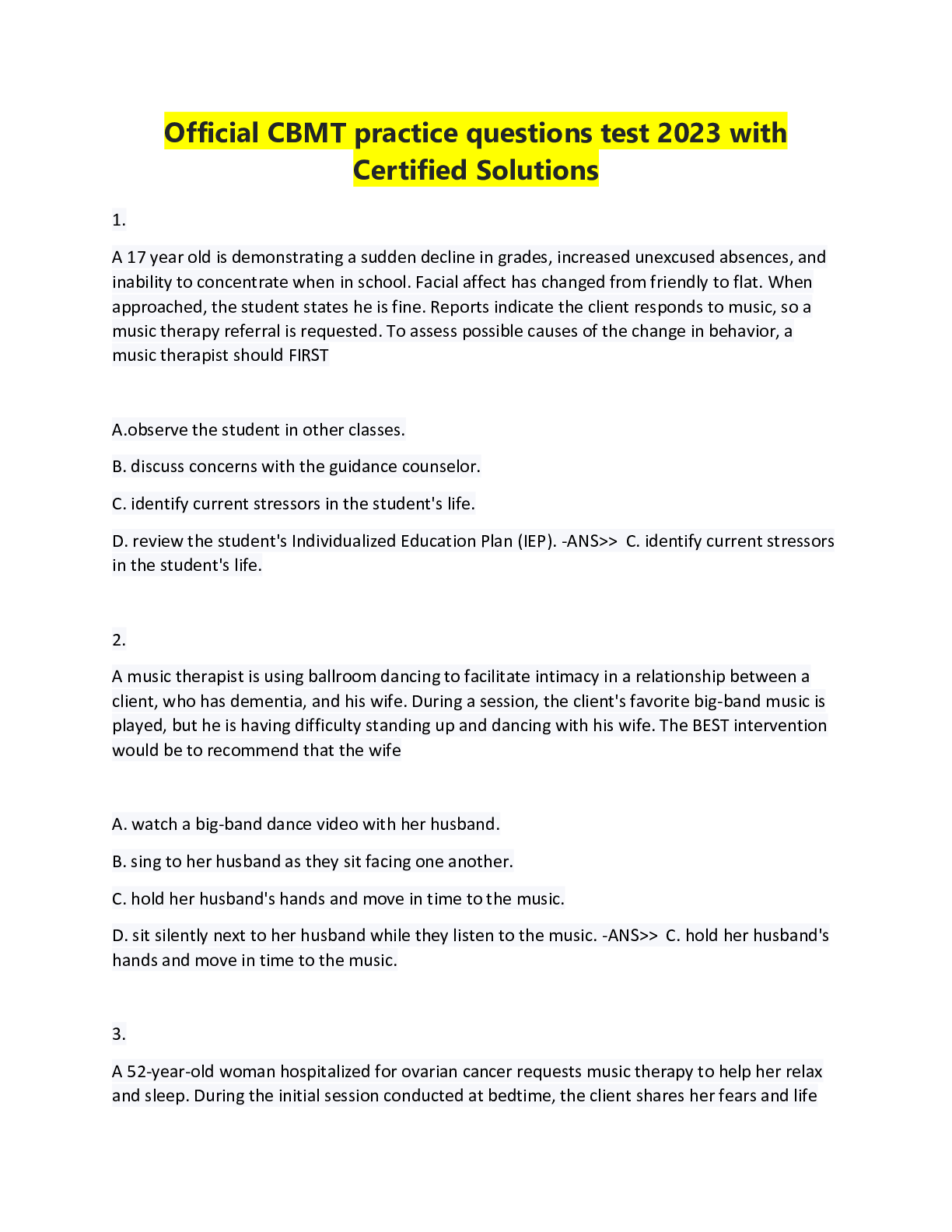


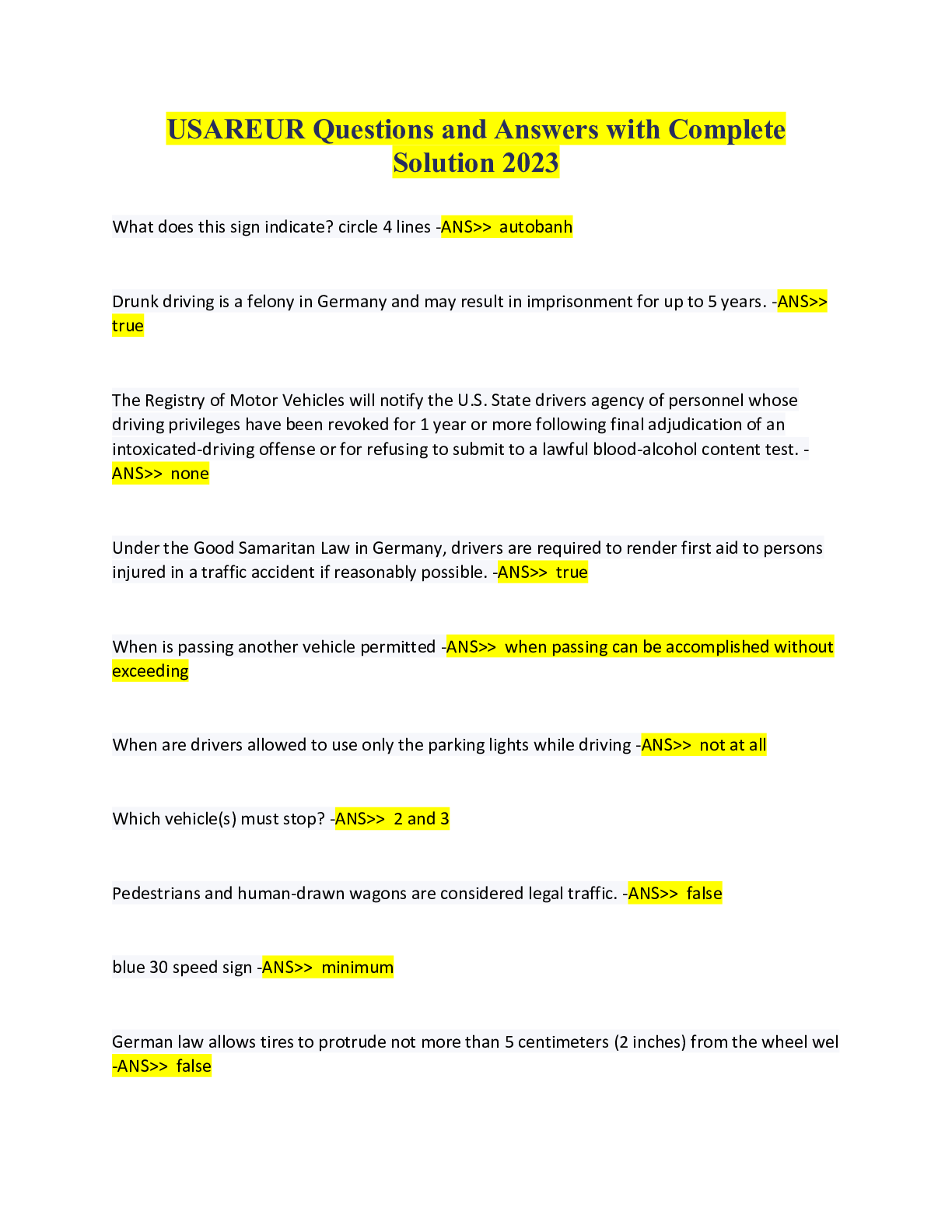

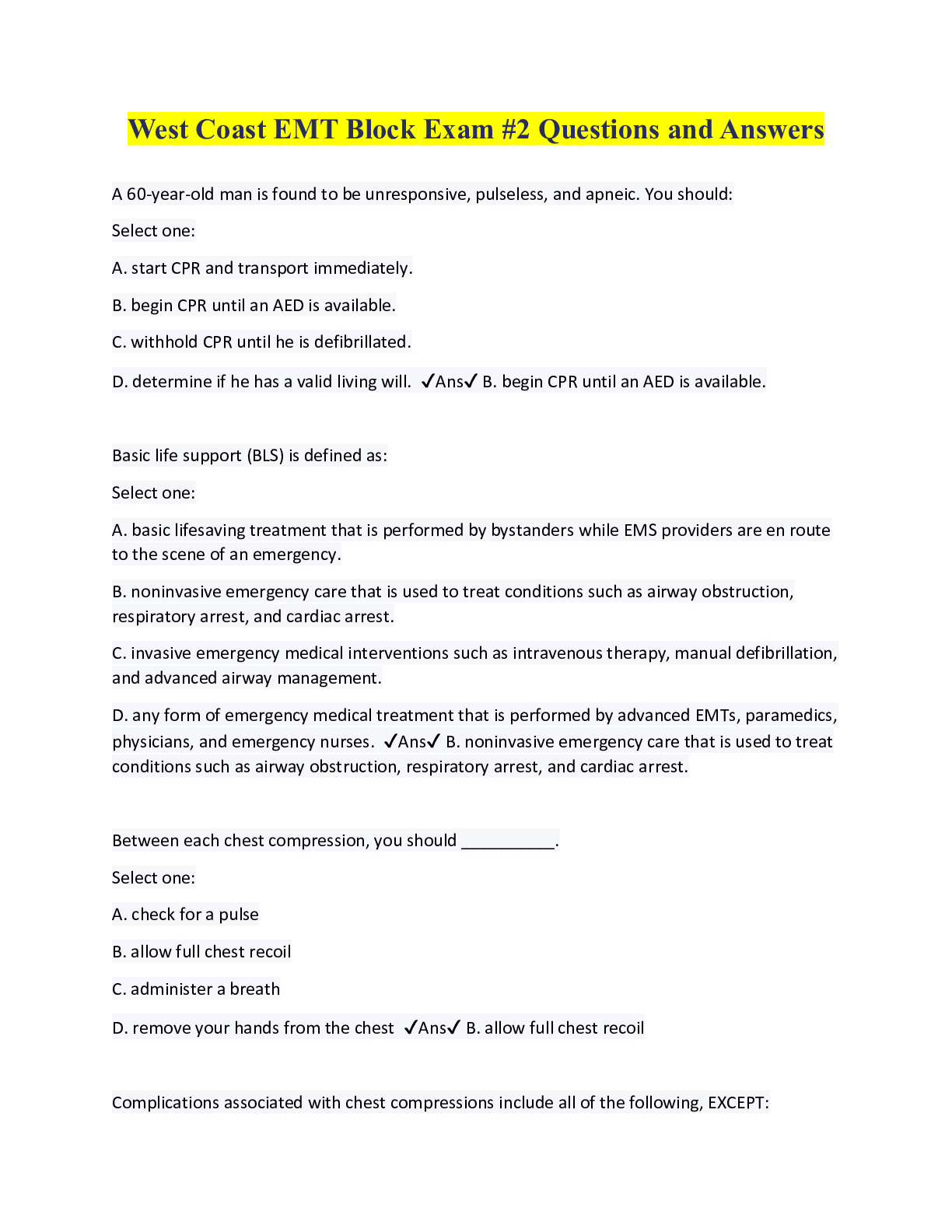
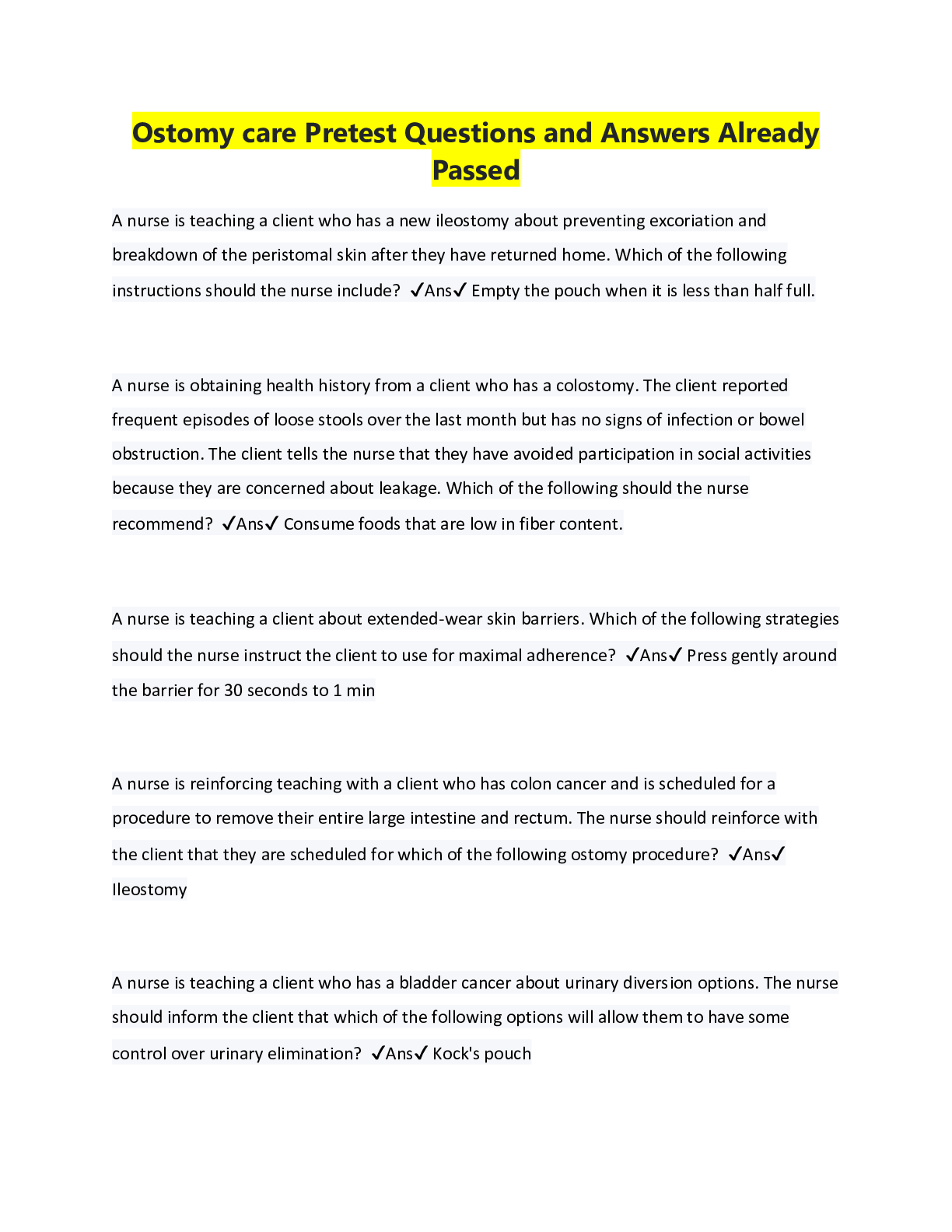
.png)
